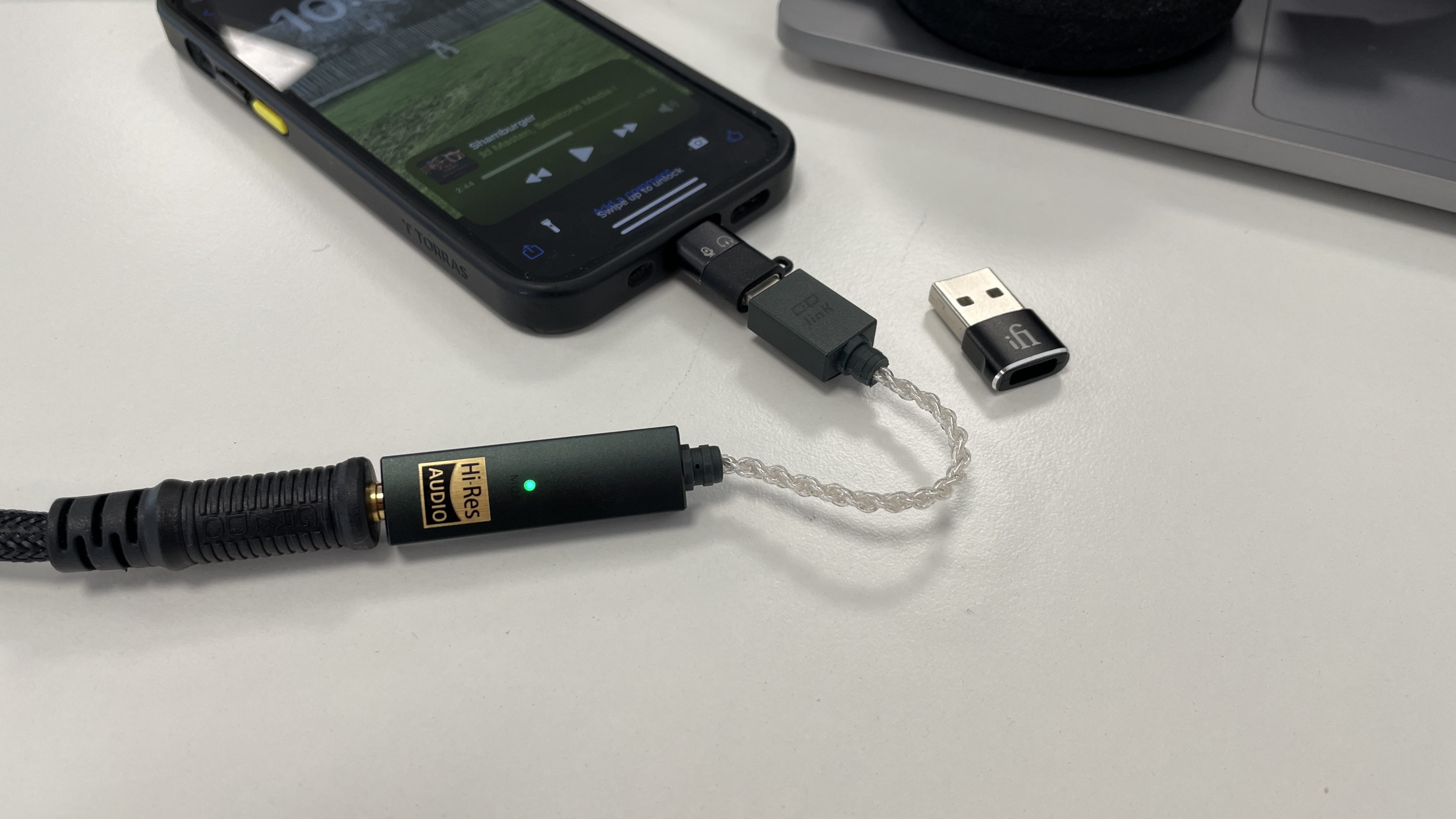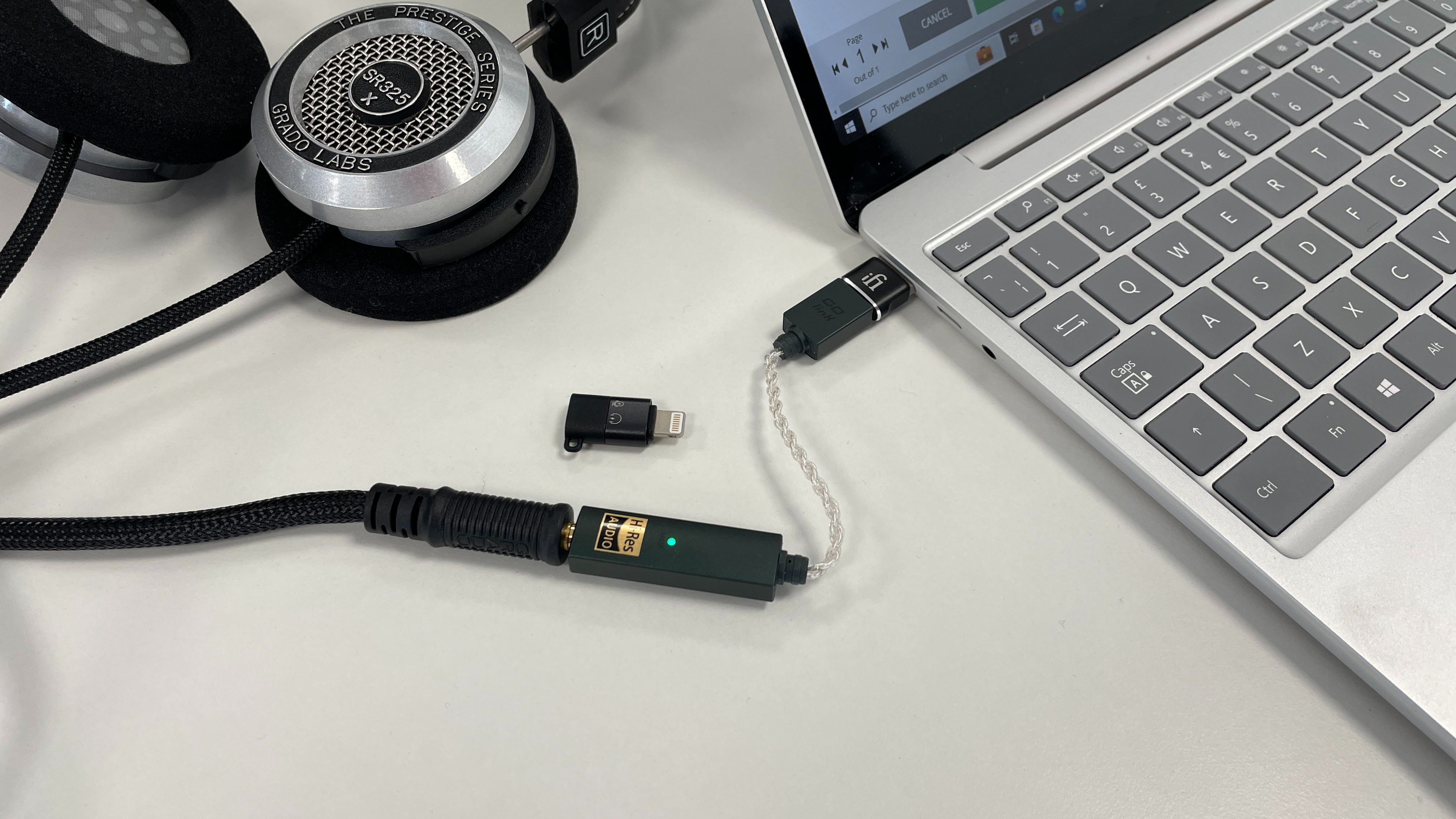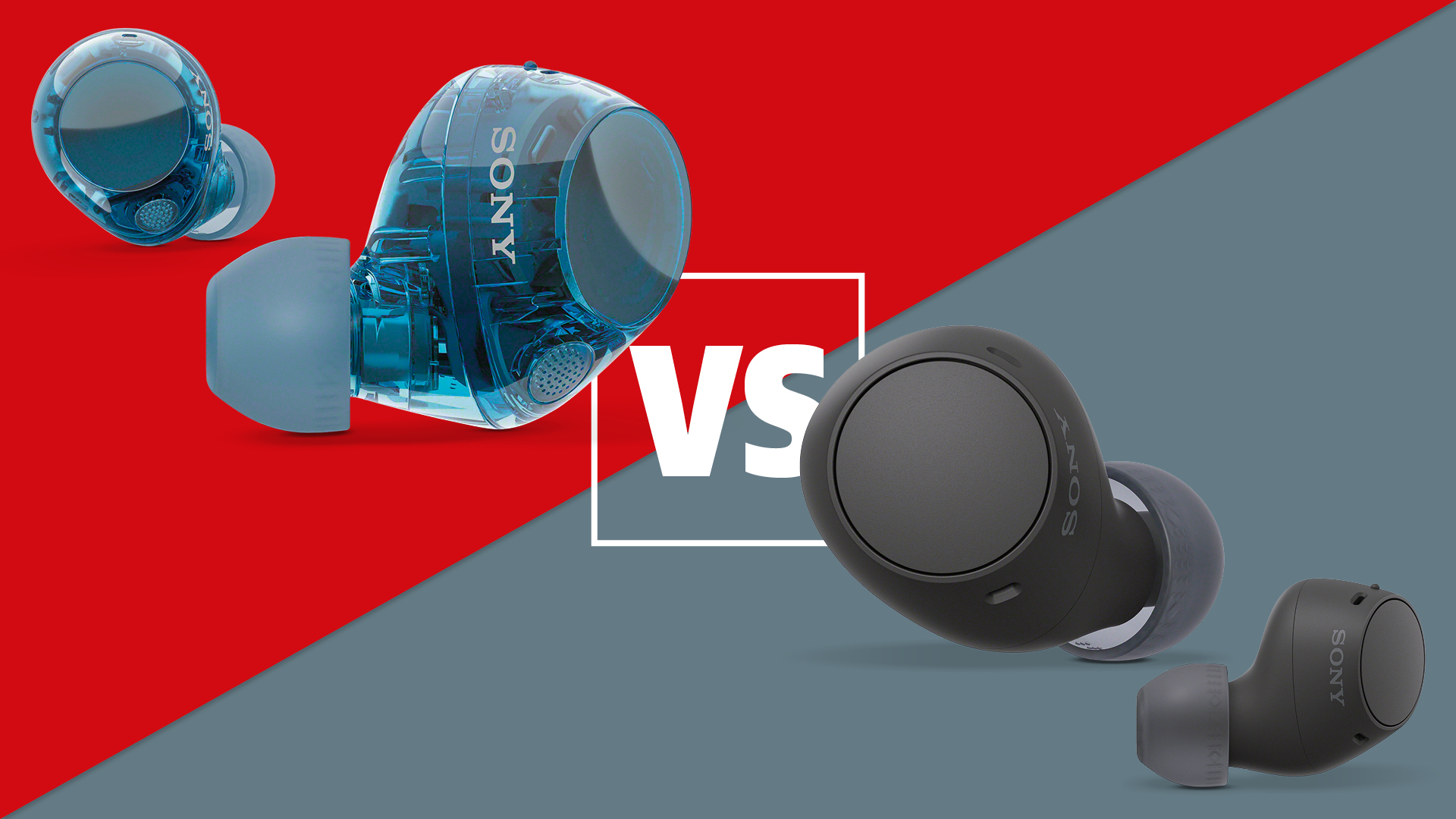I used a DAC for the first time and it’s a game-changer for my music library
Such a big benefit from such a tiny, affordable device

I haven’t been working in the eclectic world of hi-fi journalism for long. Four months ago I was a freelancer covering predominantly gaming and TV, and while there are certainly aspects to those respective worlds that are highly technical, they haven’t come close to the intricacies of the hi-fi universe.
I also have to admit that in terms of audio nouse, I was something of a philistine. I’ve always been a music lover (aren’t we all?), but that came very much from the side of the fence concerned with simply listening and playing rather than appreciating the bit rates, Bluetooth codecs or the ins and outs of floorstander placement associated with the quality of listening. As I was told earnestly at the Bristol Hi-Fi Show a few months back, sound engineers and musicians usually have very different approaches to listening to music. Neither is right or wrong, they’re just looking for different things.
That philistine philosophy of “if I like the song, it doesn’t matter how or in what form I listen to it” is slowly being eroded due to my constant exposure to the finer things the hi-fi sphere has to offer. Multi-thousand-pound reference speakers, gorgeously designed turntables, even high-end cables – they’ve all made me realise that experiencing your low-res Spotify playlist on a pair of Beats running headphones isn’t necessarily going to get the best out of your favourite recording of Jeff Buckley’s Grace.
Most of the high-end gear we use in our testing rooms as benchmarks against which new kit can be compared is, sadly, out of my price range, and no amount of doe-eyed stares at the powers that be is going to result in my taking home a pair of ATC SCM50 speakers. What is true, though, is the monumental difference just a few tweaks can make to how you digest your beloved back musical back catalogue at a far simpler, and inexpensive, level.
This revelation comes in the form of a pretty innocuous-looking DAC courtesy of iFi. The iFi Go Link is a device so small it barely registers as being larger than your standard 3.5mm-to-Lightning port adapter, yet coupled with a decent streaming platform (like Tidal) and the right headphones (a pair of the superb Grado SR325x if you’re interested), the results have been tremendous. The experience is akin to dining at the Savoy after a lifetime of eating state school dinners, or at least going from microwave meals to something cooked properly by your grandmother. Imagine if my introduction into the world of DACs had been via a higher-end DAC instead!

Indeed, the iFi Go Link isn’t the last word in portable DACs by any means, but it was probably a fitting introduction to what is an increasingly relevant product in our increasingly digital audio world. Since I tested it alongside my colleagues, awarding it a five-star review, it has elevated my wearable listening experience to another level, imbuing what now seem like somewhat lifeless, rigid recordings with vitality and a greater sense of dimension. It’s not quite the moment when Neo wakes up from the Matrix simulation, but it’s a start.
Music now has much more texture than I was used to hearing through my previous personal audio set-up, obviously helped by listening through a pair of really likeable open-backs. A Tidal Master stream of Paolo Nutini’s Scream just seems so much more infectiously funky now that it’s being given the appropriate muscle behind it, with far more of Nutini’s smoky, confident delivery coming through as a result. A recording of Nick Cave & The Bad Seeds’ Waiting For You listened through a pair of Røde NTH-100, meanwhile, gains perceptible new levels of space and freedom with a DAC attached, the Link scrubbing away a lot of the clutter and fog that I hadn’t noticed before. Similar USB DACs such as the AudioQuest DragonFly Red takes this up a notch, and I’m sure a next-level-up model like the Award-winning Chord Mojo 2 (which I'll be listening to next...) would take this effect to far greater heights.
Get the What Hi-Fi? Newsletter
The latest hi-fi, home cinema and tech news, reviews, buying advice and deals, direct to your inbox.
My favourite artists are getting the most benefit, and while they may have been overplayed to the point of nearing listener burnout, it feels a little like falling in love all over again with those tracks and records that have defined my tastes for the last however many years. Nirvana feels meatier and punchier now, with their more visceral recordings on In Utero and Bleach really given that appropriately raw texture. Hans Zimmer tracks are more epic, Jeff Buckley’s vocals have more vulnerability and flavour, while Radiohead is improved immeasurably in almost every dimension by virtue of a good DAC connected to some even better headphones.
This is obviously a combination of the streaming service, the headphones and the DAC working together in synergy, but it goes to show just how influential even a small component like a USB DAC can be in adding an extra layer of flavour to music that was in danger of going stale, while also encouraging you to seek out higher resolution tracks and better headphones so that you get the full experience.
Maybe the take-home point of all this, then, is that all of your equipment matters if you love listening to music. That the more you take care of your music and afford it the luxury of dedicated kit, be that headphones, source media players or DACs, the more return you’ll get from the tracks you love. A combination of all of these things will undoubtedly result in a big difference.
I’m not sure I’m yet in the position to be buying myself expensive, desktop standalone DACs or headphone amplifiers explicitly designed to elevate a stationary, dedicated headphone listening experience, but it has certainly made me excited about actively seeking out music listening as an activity in its own regard rather than something you do to accompany a gruelling run or to make the commute on the Stansted Express a little more bearable. If you’re fatigued from the tracks you usually adore, it might not be the songs themselves.
You might just need a small, DAC-shaped upgrade.
MORE:
What is a DAC? And why do you need one?
Read the full Grado SR325x review
7 reasons why a DAC could be your music purchase of the year
Read our five-star iFi Go Link review

Harry McKerrell is a senior staff writer at What Hi-Fi?. During his time at the publication, he has written countless news stories alongside features, advice and reviews of products ranging from floorstanding speakers and music streamers to over-ear headphones, wireless earbuds and portable DACs. He has covered launches from hi-fi and consumer tech brands, and major industry events including IFA, High End Munich and, of course, the Bristol Hi-Fi Show. When not at work he can be found playing hockey, practising the piano or trying to pet strangers' dogs.
-
Bicep I happy to tell you (the author) has used a dac before! You even compare it to apples 3.5mm to lightning dac in the article (being suprised it's almost as small). Anytime a device converts a digital signal to analogue it does so with a dac, often intigrated. It's easy to understand when you remember dac stands for digital analogue converter.Reply -
NSO The only thing you really experienced to improve the audio you hear is a change from Beats to quality Grado headphones.Reply -
niteowl360 Reply
Now what you need to do is download UAPP from PlayStore and see the difference that makes to your listening. I think you'll be in for a special treat!What Hi-Fi? said:I’ve never had much inclination to buy a portable DAC before, but having used one recently, I understand the appeal.
I used a DAC for the first time and it’s a game-changer for my music library : Read more -
djh1697 Roon integrates your personal library Qobuz, and Tidal subscriptions. The interface is wonderful. I use a USB DAC with DSD decoding. It is almost as good as my turntable!Reply
